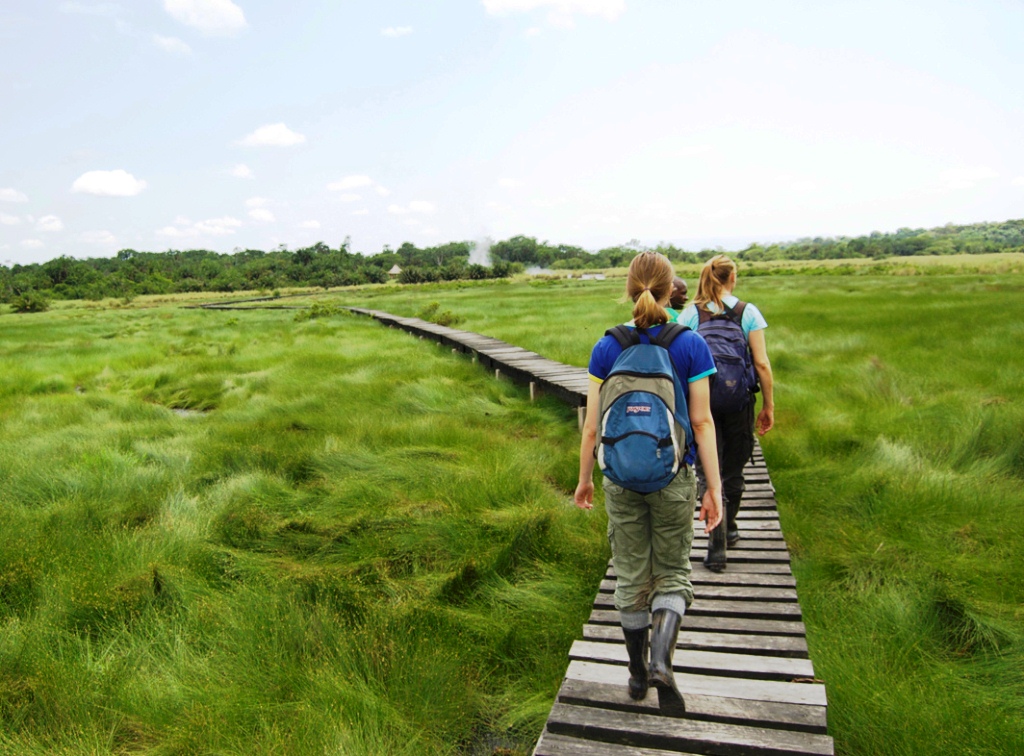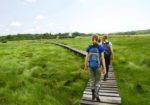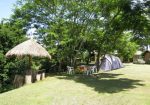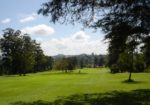Semuliki National Park sprawls across the floor of the Semuliki Valley on the remote, Western side of the Rwenzori Mountains. The park is part of the Guinea-Congo biome, the only lowland semi-deciduous forest in Uganda with a spectacular scenic beauty enhanced by the presence of hot springs at Sempaya. It is characterized by several endemic and endangered species dominated by the Eastern most extension of one of Africa’s most ancient and bio-diverse forests of the Congo Basin. While Semuliki’s species have been accumulating for over 25,000 years, the park contains evidence of even older processes, hot springs bubble up from the depths to demonstrate the powerful subterranean forces that have been shaping the rift valley during the last 14 million years. Semuliki Forest Reserve was created in 1932 and upgraded to national park status in 1993.
THE LOCAL PEOPLE
The Bamba farmers live along the base of the Rwenzori while the Bakonjo cultivate the mountain slopes. Batuku cattle keepers inhabit the open plains on the north of the park while the Batwa traditionally hunter gatherers, live on the edge of the forest.
ATTRACTIONS
Flora and Fauna
The area that Semuliki National Park covers is a distinct ecosystem within the larger Albertine Rift ecosystem. The park is located at the junction of several climatic and ecological zones and as a result has a high diversity of plant and animal species and many micro-habitats. Most of the plant and animal species in the park are also found in the Congo Basin forests, with many of these species reaching the Eastern limit of their range in Semuliki.
Birds
Of the 1047 birds in Uganda, 435 bird species (43%) are found in Semuliki National park. Albertine Rift Endemics such as the Dwarf Honey guide and Purple-breasted Sunbird can occasionally be sighted. Also, species with very limited ranges such as White-tailed Hornbill, Capuchin Babbler, Blue-headed Crested Flycatcher and the orange weaver occur in the park. The park also has about 300 butterfly species
Mammals
A total number of 53 mammal species have been recorded of which S species of large mammals and 7 species of small mammals have not been recorded in other parks. Eight species occur nowhere else in Eastern Africa such as, mona monkey, forest buffalo, bay duiker, beecroft’s flying squirrel, pygmy flying squirrel, little collared fruit bat, water chevrotain and target rat. A further ten mammals are known to occur in only a few other places in East Africa. Reptiles and amphibians are also abundant.
Sempaya Hot Springs
The Sempaya Hot Springs are Semuliki’s most famous attraction, The “male” spring, known as Bintente, measures 12m in diameter and is set in a lush swampy clearing. The “female” spring Nyasimbi, meaning “the female ancestors”, is a boiling geyser which spurts bubbling water and steam up to two meters high the steam cloud can be seen from as far as 2km away. Local people used to cook their food in these boiling pools. Sempaya—Ntandi Road This 6 km section of public road runs along one of the loveliest tracts of forest in Uganda and provides good views of birds and monkeys high up in the forest canopy. Birding walks take place in Sempaya as well as night hikes deep into the forest. In Ntandi, local Batwa dancers put on traditional performances for visitors. Another local attraction is the Mungiro Falls near the hot springs.
Semuliki River
The 160 km long Semuliki river carries runoff from the Rwenzori Mountains to Lake Albert and the Nile, proving ancient geographers’ claims that the Nile flows (in part anyway) from a snow-capped mountain in the heart of Africa. Broad, muddy, forest fringed and home to hippos and crocodiles, the Semuliki is a miniature version of the Congo River. Visitors can watch the river meander across the rift valley floor from roadside viewpoints and hike through the forest to its bird-rich banks.
TORO-SEMULIKI WILDLIFE RESERVE
Close to Semuliki is Uganda’s oldest game reserve, Toro-Semuliki Wildlife Reserve, where tropical rain forest meets grassy savanna and the flat plains are punctuated by deep river valleys. The unique geography is reflected in the diversity of wildlife which includes the forest mammals of Central Africa, key East African species and a variety of bird life. The area is a transitional zone for three of Africa’s bio-geographical regions (Sudano-sahelian, Guinea-Congotian and Zambezean). Diverse habitats occur in the valley floor of the reserve supporting a variety of vegetation types such as grasslands, riverine forests, scrub woodland, swamp forests, papyrus swamps and savanna woodland mosaic. The unique and diverse habitats recounted above support a variety of wildlife animals dominated by the Uganda kob. The reserve is also habitat to lions, elephants, reedbuck, hippopotamus, baboons, bush pigs, giant forest hog, warthog, buffaloes, bushbuck, leopard, chimpanzee and waterbuck. Several chimp communities live in the lush river valleys of the reserve.
During the enjoyable 4-6 hour guided nature walks in the gallery of Mugiri forest you are likely to see chimps and other primates as well as birds, elephants, buffalo and occasionally a lion, Chimps are commonly found during the rainy season when food is abundant. Boat trips on Lake Albert offer excellent opportunities to see rare shoe bill stork, shore birds, hippos and the rift valley escarpment sharp drop into Lake Albert.
ACTIVITIES
Birding, Hiking and Nature Walks, Hot Springs, Cultural Encounters and Trails, Primate/Forest walks
ACCESSIBILITY
By Road
Kampala-Fort Portal via Mubende is about 290kms, or a 4-5 hour drive, making it the shortest route. Kampala-Fort Portal via Masaka, Mbarara and Kasese is longer at 465kms (7-8 hrs). This route offers the chance to stop along the way at Lake Mburo National Park, Kyambura Wildlife Reserve, Queen Elizabeth National Park and Rwenzori Mountains National Park. Semuliki National Park’s Sempaya Gate is 59kms from Fort Portal. The park headquarters at Mandi is 6kms further along the road.
ACCOMMODATION
SPECIALIZED TOUR OPERATORS
- Churchill Safaris
- Great Lakes Safaris Limited
- Matoke Tours
- Kjong Uganda Safaris
- House of Uganda Safaris
- Maranatha Tours and Travel
- Mukwano Safaris
- Victoria Safaris Ltd
- Home to Africa Tours and Travel Company












1 Comment
Shy Neha, Agra, 2015-06-28 at 8:31 AM
our visit to Semliki National Park is simply the most ultimate of holidaying options during our stay in Uganda . It’s full of adventure and excitement. the hot water spring very wonderful and many types of birds.